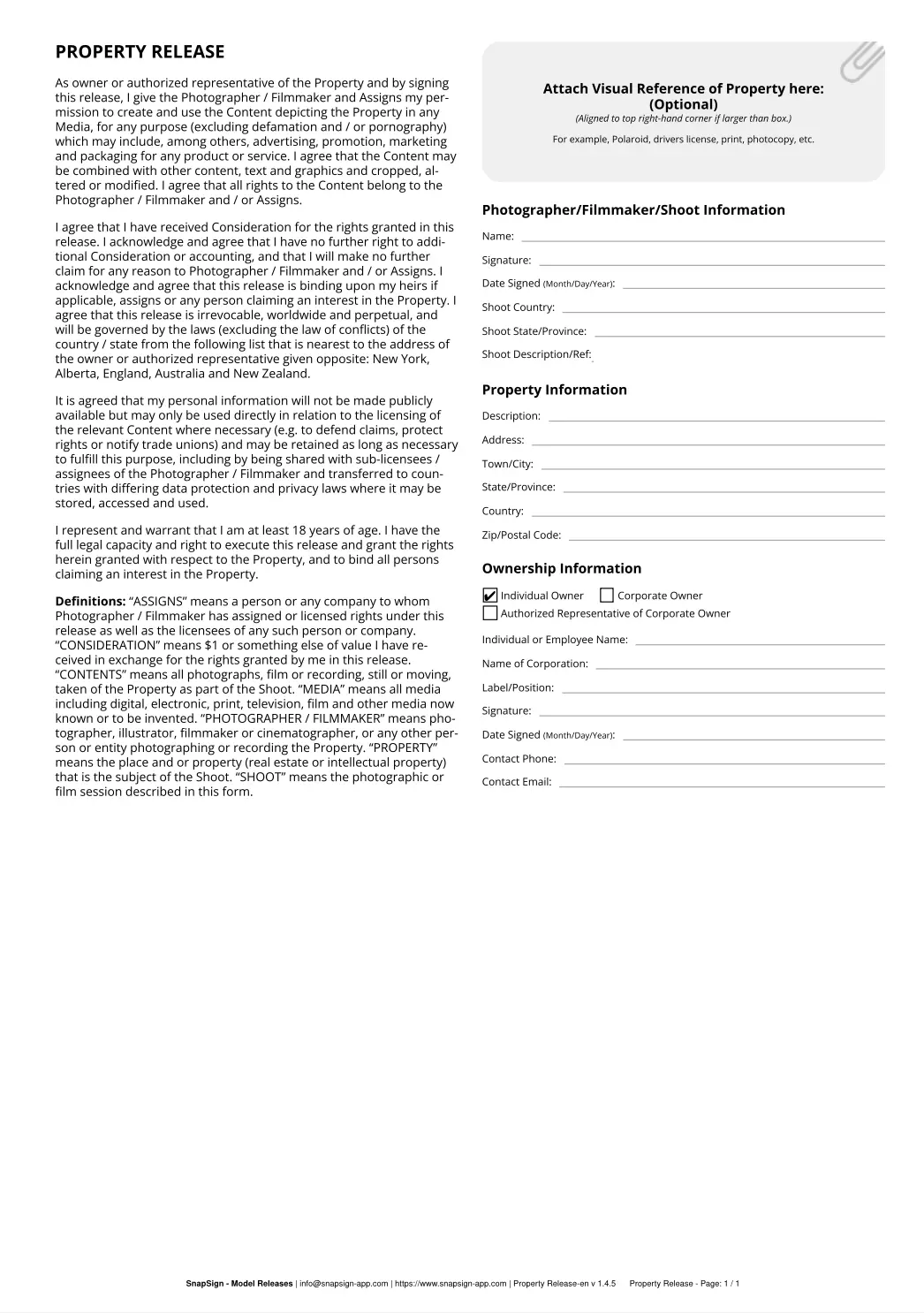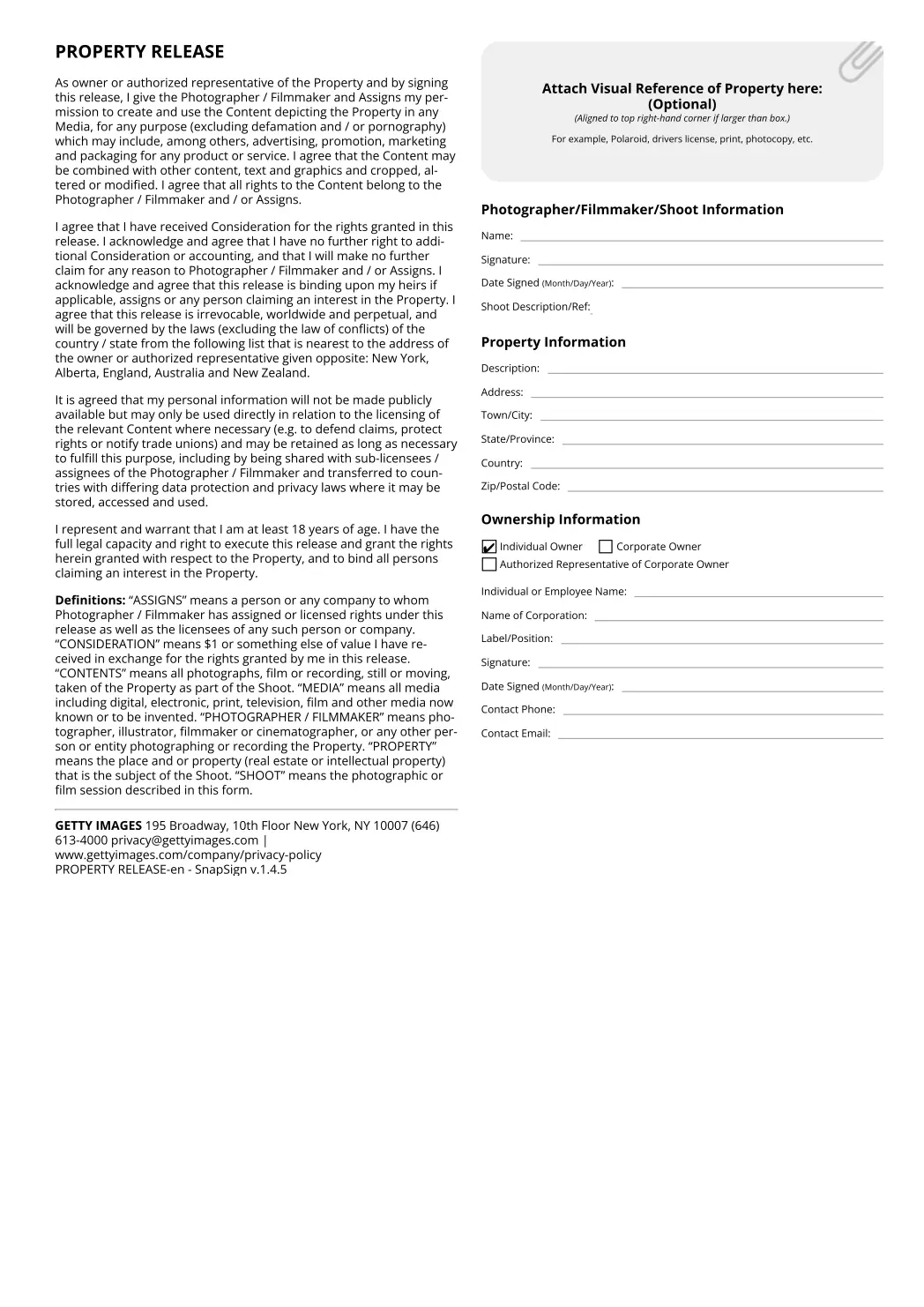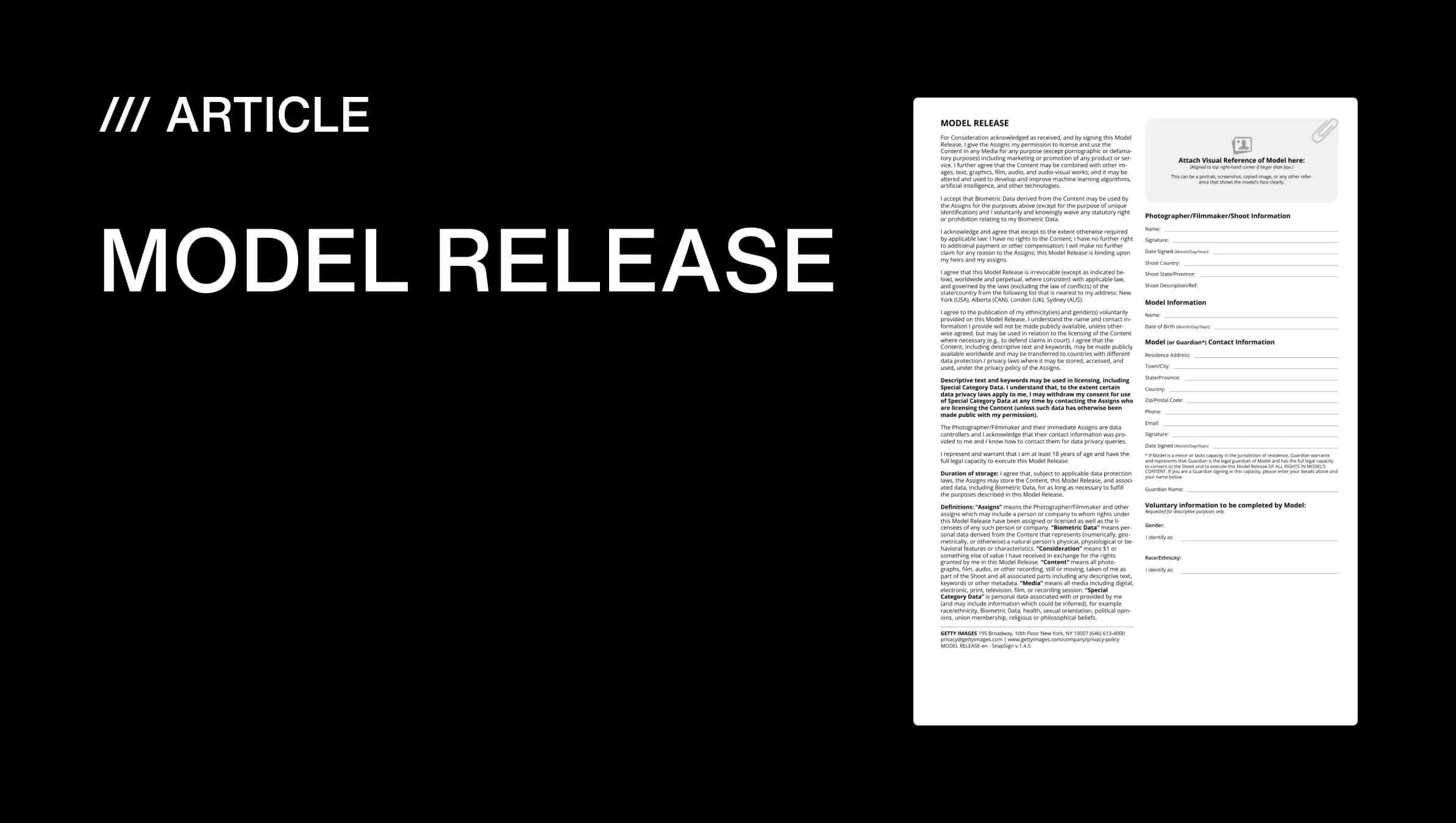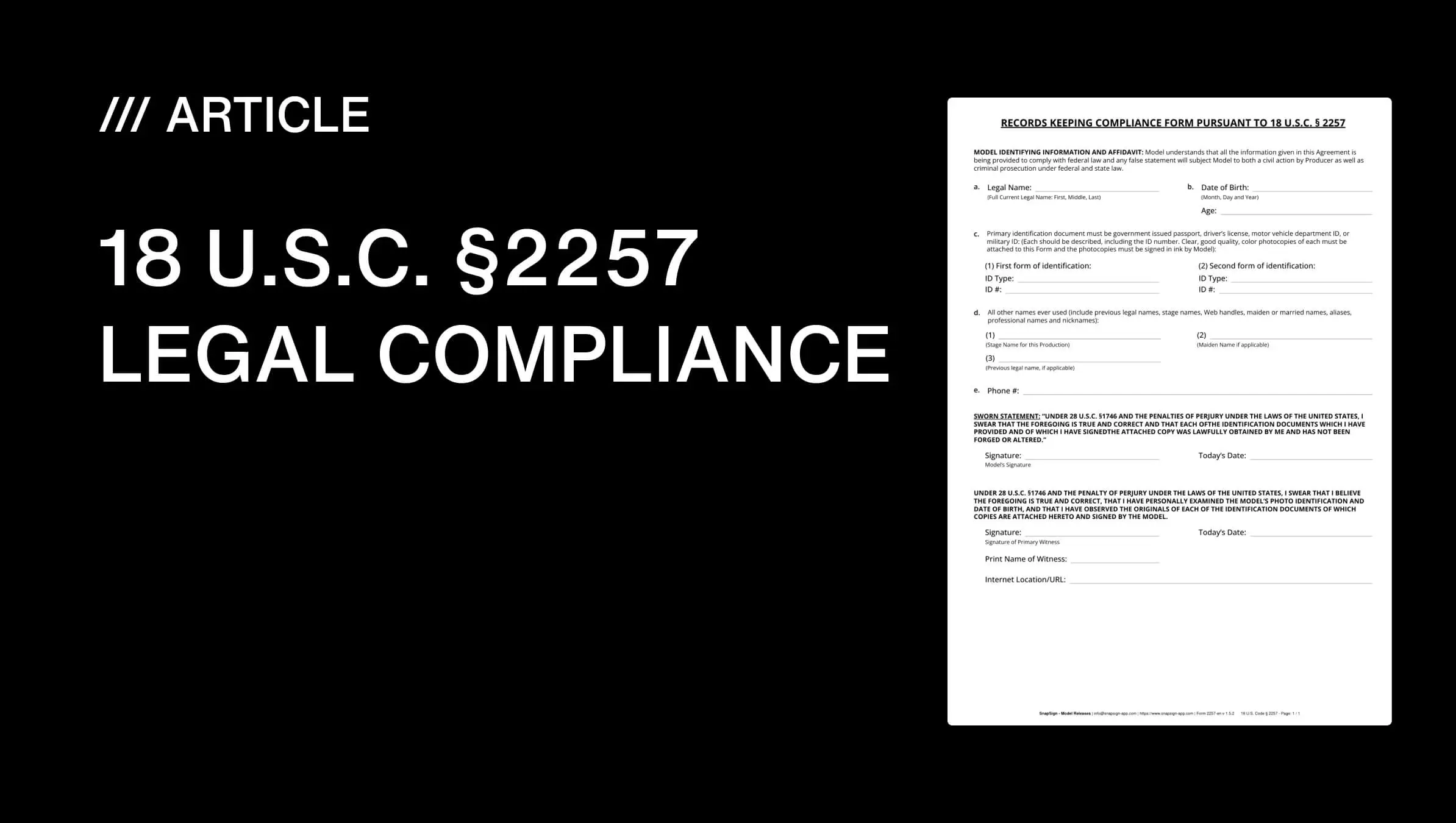The first time I got burned by not having a property release, I was shooting this dreamy little indie bookstore downtown - loads of character, perfect light. Thought I struck gold. But a week later, the owner called me furious, and I had no legal footing. That’s when I learned: a property release? It’s not just a form - it’s your golden ticket. That’s your golden ticket - the thumbs-up from the person who owns the spot you’re shooting. It’s the legal okay that says, “Go ahead, use this footage or photo of my place in your project.” Whether it’s for an ad, a stock site, or a client video, this doc keeps things tidy. I’ve learned the hard way - if you're filming at someone’s backyard BBQ or grabbing a moody shot of a funky bookstore, no release means you're practically asking for a legal storm.
The Legal Importance of Property Releases
Just because your lens can see something doesn’t mean you can cash in on it. I once shot a cool little bistro from across the street. Looked amazing. Posted it to a stock site - and bam! A takedown email popped up a week later. Lesson learned:
Get a release.
"Paperwork isn’t glamorous - but it keeps you in business."
Common Misconceptions
You know what cracks me up? When people say, “I shot it from public space, so I’m good.” Nope. If that swanky building or mural is the star of your photo and it’s private property? You're still gonna need that release, mate - especially if you're turning it into profit.
When Do You Need a Property Release?
Editorial Use vs. Commercial Use
Here’s a principle I follow:
If it’s editorial (like news or documentaries), you’re usually fine. If it’s commercial, get the signature.
Private vs. Public Property
Snapping photos at a public rally in the park? You’re likely fine. But flying a drone over someone’s villa during a private event? Big no-no. Always ask yourself - am I cool doing this without permission? If there’s a pause, you already know the answer.
Who Should Sign a Property Release?
Property Owners
This part’s pretty cut and dry - the person or entity that owns the place has to be the one signing off. Could be an individual, a business, or even a council authority. I always make sure I’m talking to the actual decision-maker, not just some guy who opens the gate.
Authorized Representatives
There’ve been times I’ve dealt with property managers who had signing power. That's acceptable, but I still ask for validation or an email confirmation. It's better to be the annoying person who poses additional questions than to deal with legal repercussions later.
What Types of Property Require Releases?
Residential Buildings
Any time a private residence is involved - even if it’s a charming old flat barely visible in the shot - I don’t roll the dice. If it’s clear and identifiable, I receive the approval.
Business and Industrial Sites
Warehouses, shared workspaces, specialty stores - they frequently feature logos or unique branding. I once had to blur out half a frame because a sign crept in. Never again.
Recognizable Landmarks and Icons
Surprisingly, some landmarks are safeguarded by intellectual property laws. Are you aware that the nighttime lights of the Eiffel Tower are under copyright protection? Of course. If you plan to use it for commercial reasons, especially in ads or products, check the rules in advance.
Key Elements of a Property Release Form
Clear Description of the Property
Clarity wins here. I usually write a short description and slap a couple of reference photos into the form. In that manner, no one can claim, “I wasn’t aware of what you were utilizing.”
Granted Rights and Usage Scope
I learned early on to be detailed - are the rights global? For print only? Social media ads? Forever or just a 2-year campaign? If it’s not in black and white, assume there’ll be drama later.
Signatures and Contact Information
The basics matter. Full names, phone numbers, emails - and signatures. I always use a digital signing tool, like SnapSign, to keep it clean, legal, and easy to track.
Download a Property Release Template
Need a solid starting point? I’ve put together a downloadable property release form - the kind I use on real-world shoots.






